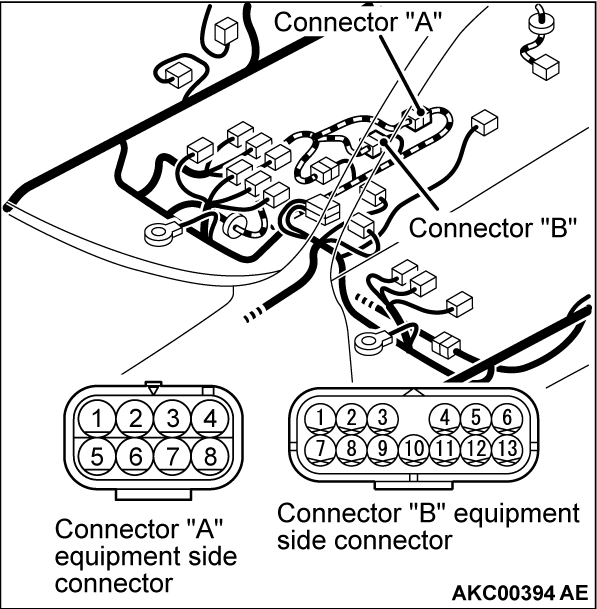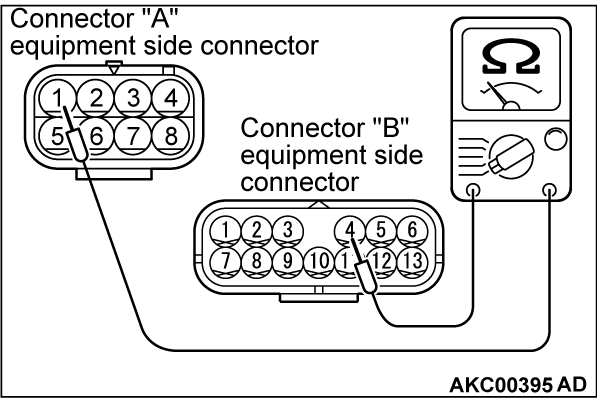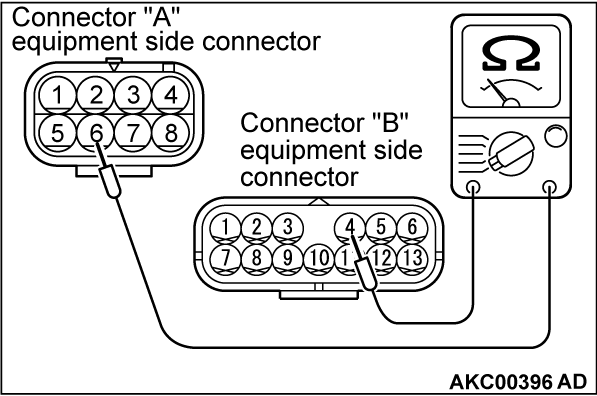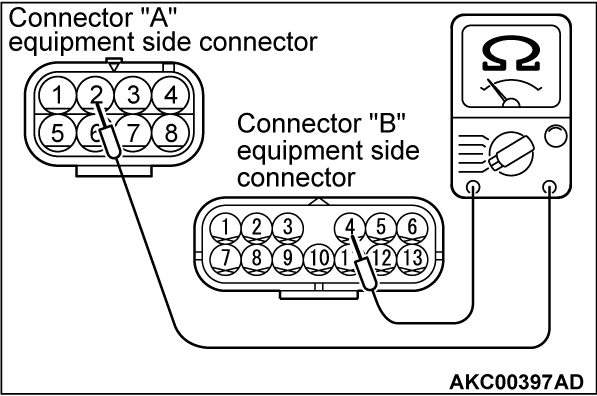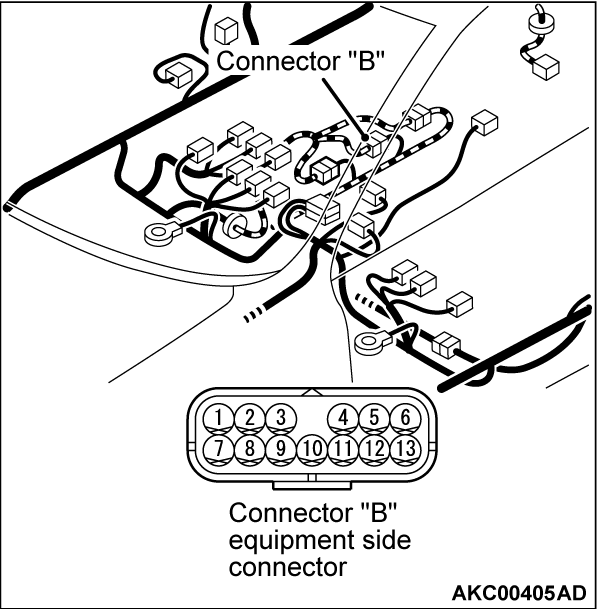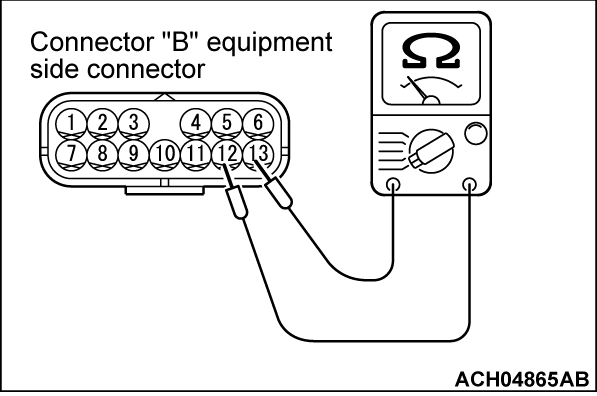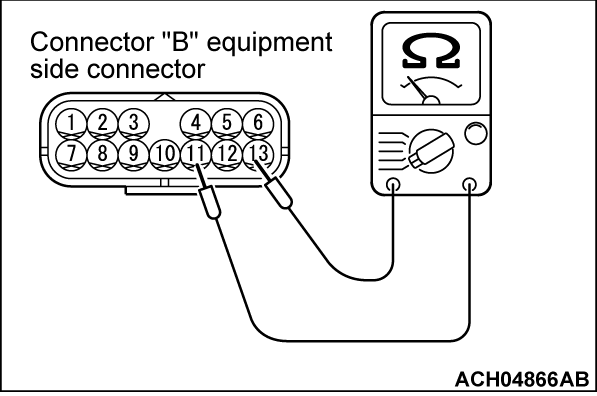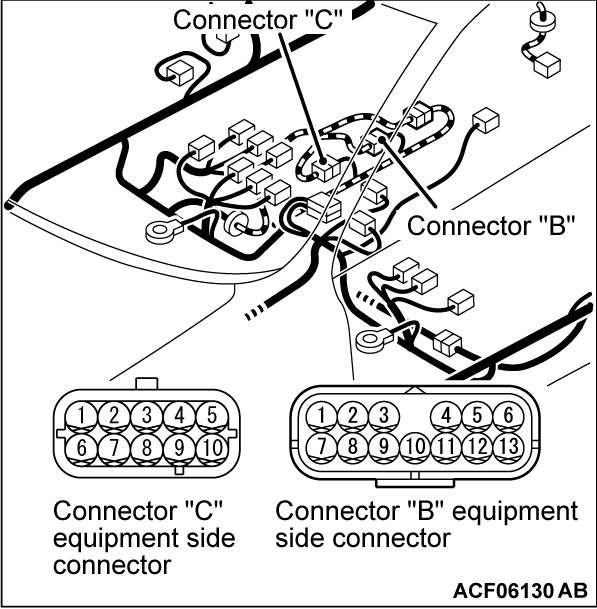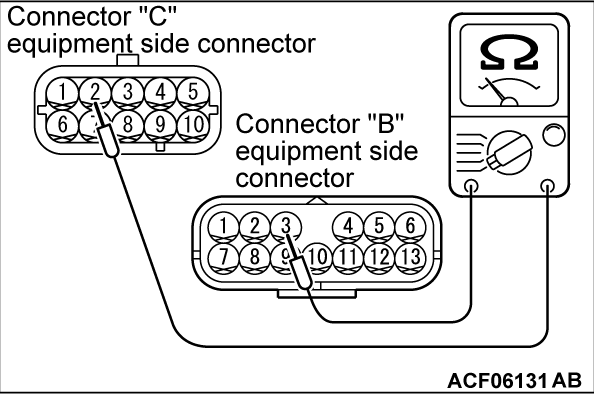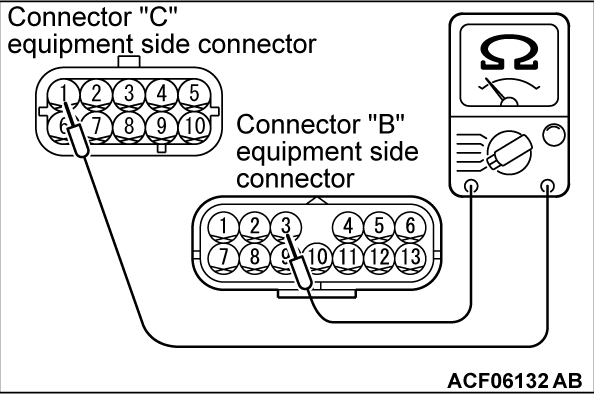CHECK ON COIL RESISTANCE OF CONTACTOR
| danger | Be sure to pull service plugs to shut down high voltage for servicing the high voltage system components (Refer to  ). ). |
| danger | When pulling service plugs, wear the specified protective equipment (Refer to  ). ). |
CHECK ON COIL RESISTANCE OF CHARGING CONTACTOR
1. Disconnect the main drive lithium-ion battery connectors "A" and "B".
2. Measure the resistance between terminal No. 1 of the main drive lithium-ion battery connector "A" and No. 4 of the main drive lithium-ion battery connector "B".
Standard value: 33 - 39 Ω [at 23°C (73°F)]
3. If the resistance deviates from the standard value, the circuit and the connector can have an abnormality inside the main drive lithium-ion battery.
CHECK ON COIL RESISTANCE OF MAIN CONTACTOR (P)
1. Disconnect the main drive lithium-ion battery connectors "A" and "B".
2. Measure the resistance between terminal No. 6 of the main drive lithium-ion battery connector "A" and No. 4 of the main drive lithium-ion battery connector "B".
Standard value: 19 - 22 Ω [at 23°C (73°F)]
3. If the resistance deviates from the standard value, the circuit and the connector can have an abnormality inside the main drive lithium-ion battery.
CHECK ON COIL RESISTANCE OF MAIN CONTACTOR (N)
1. Disconnect the main drive lithium-ion battery connectors "A" and "B".
2. Measure the resistance between terminal No. 2 of the main drive lithium-ion battery connector "A" and No. 4 of the main drive lithium-ion battery connector "B".
Standard value: 19 - 22 Ω [at 23°C (73°F)]
3. If the resistance deviates from the standard value, the circuit and the connector can have an abnormality inside the main drive lithium-ion battery.
CHECK ON COIL RESISTANCE OF QUICK CHARGING CONTACTOR (P) <VEHICLES WITH QUICK CHARGING SYSTEM>
1. Disconnect the main drive lithium-ion battery connectors "B".
2. Measure the resistance between terminal No. 11 and No. 12 of the main drive lithium-ion battery connector "B".
Standard value: 19 - 22 Ω [at 23°C (73°F)]
3. If the resistance deviates from the standard value, the circuit and the connector can have an abnormality inside the main drive lithium-ion battery.
CHECK ON COIL RESISTANCE OF QUICK CHARGING CONTACTOR (N) <VEHICLES WITH QUICK CHARGING SYSTEM>
1. Disconnect the main drive lithium-ion battery connectors "B".
2. Measure the resistance between terminal No. 11 and No. 13 of the main drive lithium-ion battery connector "B".
Standard value: 19 - 22 Ω [at 23°C (73°F)]
3. If the resistance deviates from the standard value, the circuit and the connector can have an abnormality inside the main drive lithium-ion battery.
CHECK ON COIL RESISTANCE OF MAIN DRIVE LITHIUM-ION BATTERY PTC HEATER CONTACTOR (P) <VEHICLES WITH MAIN DRIVE LITHIUM-ION BATTERY WARMING SYSTEM>
1. Disconnect the main drive lithium-ion battery connector "B" and "C".
2. Measure the resistance between terminal No. 3 of the main drive lithium-ion battery connector "B" and No. 2 of the main drive lithium-ion battery connector "C".
Standard value: 19 - 22 Ω [at 23°C (73°F)]
3. If the resistance deviates from the standard value, the circuit and the connector can have an abnormality inside the main drive lithium-ion battery.
CHECK ON COIL RESISTANCE OF MAIN DRIVE LITHIUM-ION BATTERY PTC HEATER CONTACTOR (N) <VEHICLES WITH MAIN DRIVE LITHIUM-ION BATTERY WARMING SYSTEM>
1. Disconnect the main drive lithium-ion battery connector "B" and "C".
2. Measure the resistance between terminal No. 3 of the main drive lithium-ion battery connector "B" and No. 1 of the main drive lithium-ion battery connector "C".
Standard value: 19 - 22 Ω [at 23°C (73°F)]
3. If the resistance deviates from the standard value, the circuit and the connector can have an abnormality inside the main drive lithium-ion battery.
![[Previous]](../../../buttons/fprev.png)
![[Next]](../../../buttons/fnext.png)
